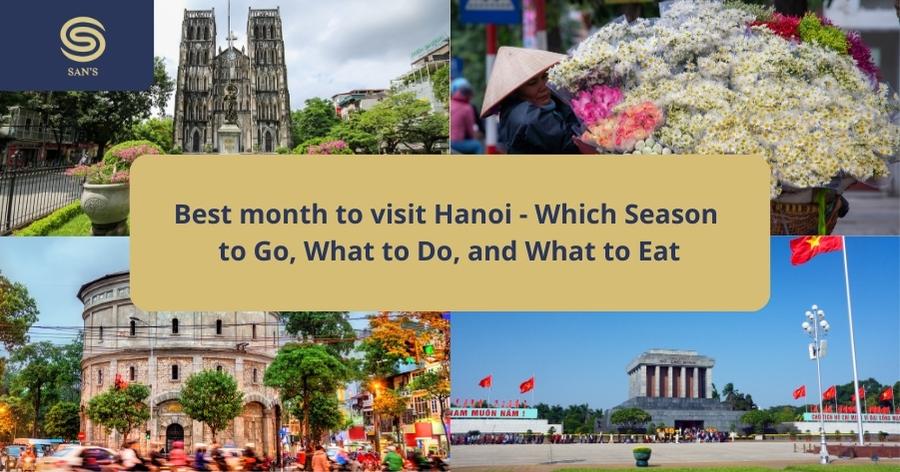Vietnam, with its mosaic of flavors, traditions, and ingredients, stands as a testament to the intricate relationship between food and culture. Every dish tells a story, every aroma captures an emotion, and every bite evokes a memory. In this culinary tapestry, certain dishes emerge not just as meals but as symbols of time, marking the changing of seasons and celebrating nature’s bounties.

One such emblematic delicacy is the “green sticky rice” or “Cốm“. Not just a treat to the palate, this verdant-hued rice, harvested during the early days of autumn, is much more than food—it’s a seasonal celebration, an emblem of Vietnam’s rich agrarian heritage, and a taste that evokes nostalgia in every Vietnamese heart.
Historical Roots of green sticky rice
Steeped in time and tradition, the story of Cốm is as vibrant and captivating as Vietnam itself. Cốm, which literally translates to “young rice”, has played a crucial role in Vietnamese cultural and culinary narratives for generations. Originating in the picturesque Vong village, situated on the outskirts of Hanoi, this delicate rice variant has been associated with the spirit and rhythm of Vietnamese rural life.
Long before it became a sought-after delicacy in bustling urban markets, Cốm was deeply intertwined with Vietnamese folklore. There are tales of farmers singing melodious tunes in the fields to entice the rice plants to yield their best. These same farmers, under the moonlit autumn skies, would meticulously handpick the young, green rice grains, ensuring only the finest were selected.
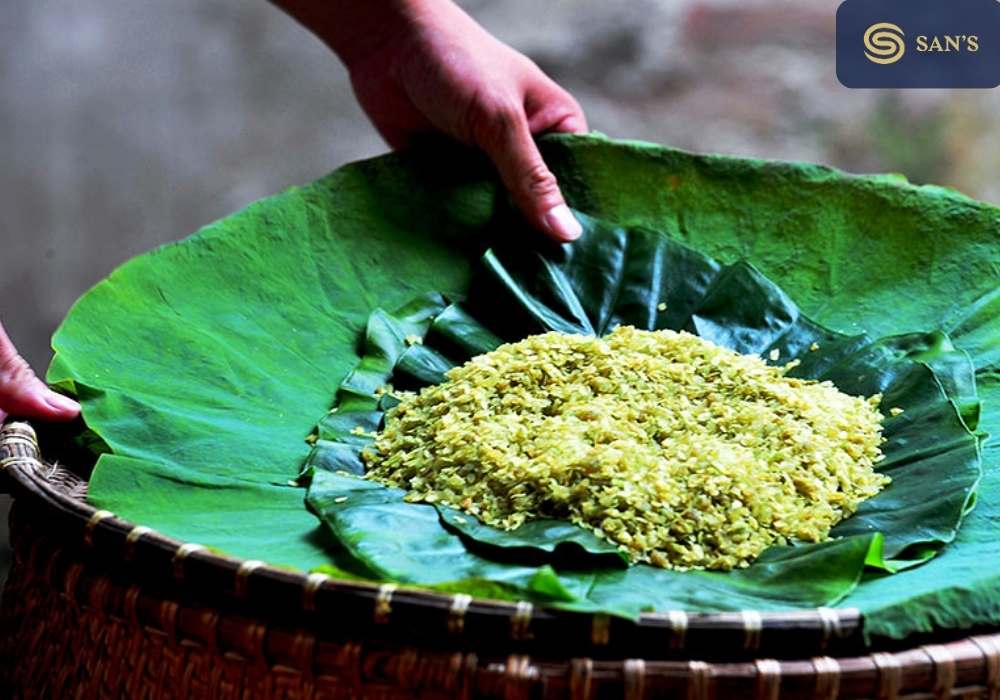
The preparation of Cốm itself is an art passed down through generations. The green rice grains are roasted and flattened, imbuing them with that distinct flavor and chewy texture. It is often said that the best Cốm retains the fresh scent of dew and the earthiness of the paddy fields.
Moreover, Cốm isn’t just celebrated for its taste but also its symbolic significance. It heralds the arrival of autumn, marking the transition from the sultry summer to cooler, crisp days. In Vietnamese folklore, Cốm is often associated with youth, purity, and the fleeting nature of life, reminding one of the transient beauty of each season.
In essence, Cốm is not just green sticky rice; it’s a bite-sized piece of history, a culinary heirloom, and an embodiment of Vietnamese traditions and tales.
What Makes Green Sticky Rice Special?
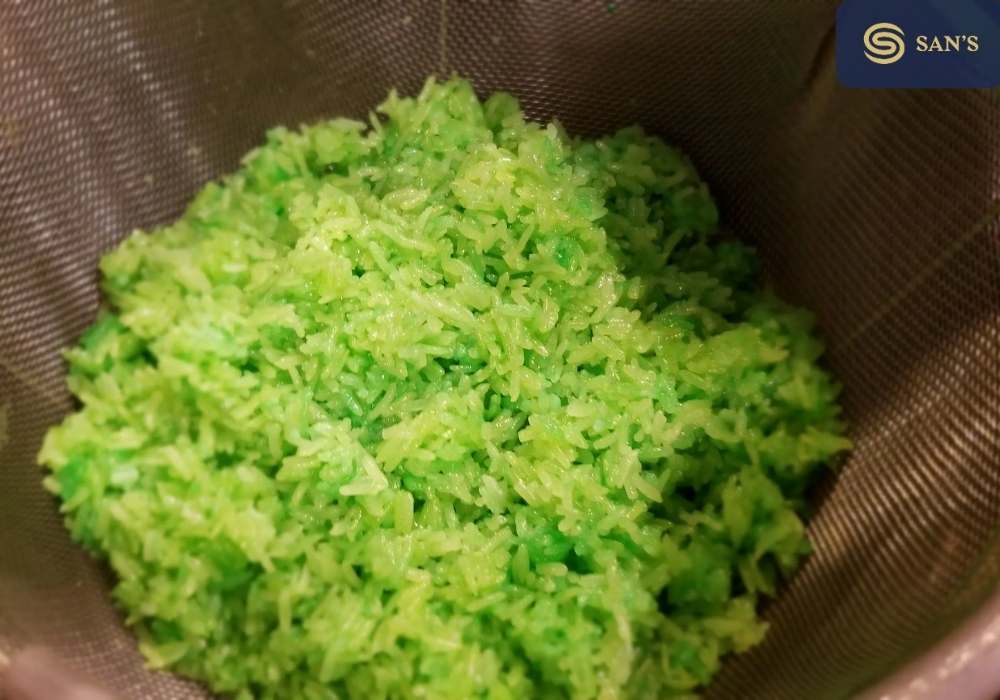
Vietnamese cuisine is an ode to nature, with each dish telling a tale of the land’s bounty. Among these, the green sticky rice stands out not only for its delightful flavor but also for its connection to a particular time and place. But what exactly sets this humble rice apart?
- Harvesting Young Rice: The journey of green sticky rice, locally known as Cốm, begins with the selection of young, green rice grains harvested in early autumn. These grains, picked in their nascent stage, have a softness and a subtle sweetness which are quintessential to Cốm. Unlike mature rice, which is left to age in the fields, these young grains are plucked early, capturing their freshness and tenderness.
- The Transformation Process: Once harvested, these green rice grains undergo a meticulous preparation process. They are first cleaned and soaked to release any impurities. This is followed by the most defining step: roasting. The young grains are carefully roasted over a low flame, ensuring they dry out without losing their inherent moisture. This roasting imbues the rice with a gentle toasted aroma. After roasting, the grains are pounded to remove their husks, yielding a flat and slightly flaky texture. This delicate balance between roasting and pounding gives Cốm its unique bite and chewiness.
- The Green Hue: Cốm’s captivating green hue is nature’s own artwork. This color stems from the natural chlorophyll present in the young rice grains. Chlorophyll, apart from giving the rice its characteristic color, has been associated with various health benefits. In Vietnamese culture, the green color of Cốm is often seen as a symbol of freshness, renewal, and vitality. It serves as a beautiful reminder of the verdant paddy fields and the vitality of the Vietnamese countryside.
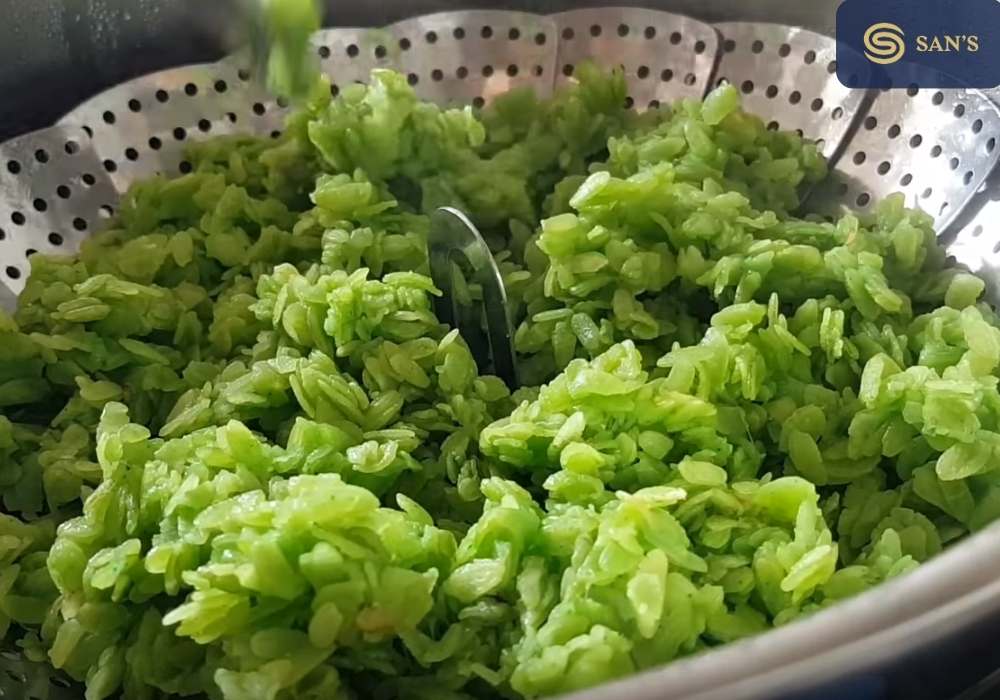
In conclusion, green sticky rice is not just a culinary delight but a sensory experience. Every bite offers a taste of the Vietnamese countryside, a blend of the land’s flavors and its rich traditions. The process of creating Cốm, from the fields to the plate, is a testament to Vietnam’s respect for nature and its bounties.
Making Your Own Green Sticky Rice:
For those who wish to recreate a taste of Vietnam’s iconic autumn at home, making green sticky rice can be a rewarding experience. This dish not only pleases the palate but also offers an insight into the traditions and rhythms of Vietnamese life. Here’s a guide to help you craft this delicacy:
- Sourcing the Right Rice:
- Begin by looking for the youngest rice grains you can find. This could be a bit of a challenge outside of Vietnam, but Asian grocery stores or specialty markets might carry them during harvest seasons.
- Opt for grains that are bright green in color, signaling their youth and freshness.
- Washing and Soaking:
- Thoroughly rinse the rice grains until the water runs clear to get rid of any impurities.
- Soak the rice for at least 6 hours, or preferably overnight, ensuring they are fully hydrated and easier to process.
- Roasting the Grains:
- Dry the soaked grains on a cloth or bamboo tray, ensuring no moisture remains.
- On a low flame, gently roast the rice in a pan, continuously stirring to prevent any burning. This process dries the grains further and accentuates the aroma. The goal is to ensure each grain is evenly toasted but not browned.
- Pounding the Rice:
- Once cooled, gently pound the rice using a mortar and pestle. This step is crucial for achieving the flaky yet sticky texture of green sticky rice. Remember, you’re not looking to create a powder but to slightly break the grains.
- Final Roasting:
- After pounding, roast the grains once more on low heat until they are dry and have achieved the desired consistency.
- Serving Suggestions:
- Serve the green sticky rice with grated coconut, sugar, and sesame seeds for a traditional experience. You can also enjoy it with ripe bananas or even savory accompaniments like shredded chicken.
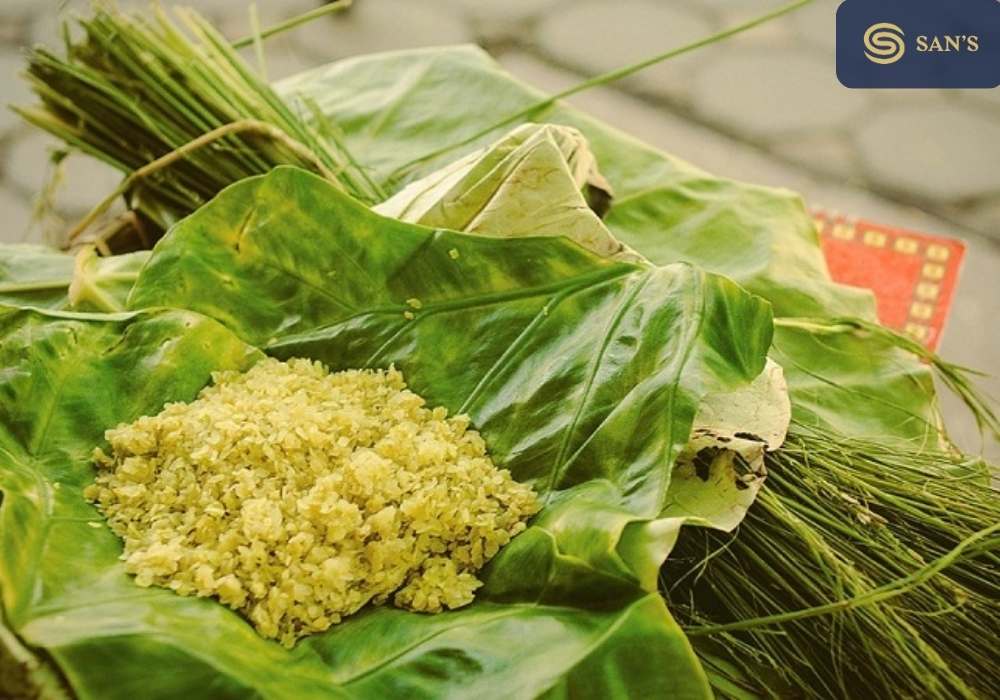
Tips:
- The key to perfect green sticky rice lies in constant attention during roasting to prevent the delicate young grains from burning.
- Some aficionados prefer to add a touch of pandan extract during the soaking process for an added depth of flavor and color.
- Store any leftovers in an airtight container to maintain freshness.
Embrace the process, and as you savor your homemade green sticky rice, transport yourself to the bustling streets of Hanoi during harvest season, where this dish reigns as a symbol of gratitude for nature’s bounty.





